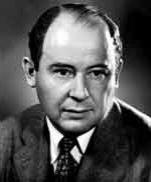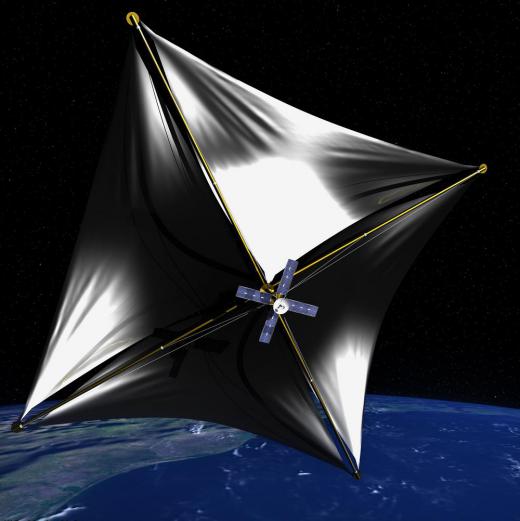What Is a Von Neumann Probe?
 Michael Anissimov
Michael Anissimov
A von Neumann probe is a hypothetical spacefaring probe designed to self-replicate using raw materials found in any star system. The probe is named after John von Neumann, a mathematician who made many important contributions to science. One of his contributions was the first rigorous study of self-replicating machines. Though von Neumann himself never discussed the idea of using self-replicating machines to explore space, shortly after his death in 1957 the concept began to enter science fiction and futurism.
Packed with advanced artificial intelligence and nanotechnology, a fleet of these probes could conceivably help colonize the entire galaxy or even universe. They could carry human zygotes, or the information required to create them, to populate new-found worlds without the hassle of human interstellar spaceflight. A von Neumann probe could even contain emulations of human beings, assisting with decision-making and data analysis.

If the speed of a von Neumann probe and its ability to self-replicate is fast enough, the probes could enable the creation of a colonization wavefront of exponentially self-replicating probes, expanding outwards at an appreciable fraction of the speed of light. Probes could be programmed to terraform planets upon arrival, preparing worlds for future inhabitants.
The best-known appearance of a von Neumann probe in fiction was in Stanley Kubrick's 1968 film, "2001: A Space Odyssey," which portrayed this probe as a black monolith. Since then, the concept has appeared in many sci-fi novels and futurist works.

Oxford philosopher Nick Bostrom has argued that a von Neumann probe should be dispatched from Earth as soon as possible, due to the huge opportunity cost of delaying space colonization, a concept he calls "astronomical waste." The resources of the galaxy could be used to sustain massive numbers of people living happy, fulfilling lives, but now those resources are simply sitting idle, being wasted. Others believe this viewpoint to be idealistic and egocentric; and point to the dangers of self-replicating machines turning the universe into real 'astronomical waste.' One hypothetical alternate form of the probe, referred to as the berserker probe, could theoretically use the same technology to make life impossible on all worlds by sterilizing every world it touches--even wiping out existing life. This scenario might unfold via unforeseen malfunctions of the probe, or through purposeful apocalyptic technology.
Whether the von Neumann probe is realized or not, the notion of spacefaring self-replicating machines clearing the way for humankind remains a very real future possibility.
AS FEATURED ON:
AS FEATURED ON:













Discussion Comments
@everetra - I don’t know how practical these things would be in replicating human life. I do think terafforming is a real possibility, and believe we should explore outer space as soon as possible using this technology.
Think about it. In principle, a Von Neumann machine could take a barely habitable planet, and make it habitable, opening up a world of possibilities for where humans may live in outer space.
@allenJo - I had never heard of the Von Neumann machine until reading this article. However, it is reminiscent of a concept that has been quite popular in some UFO circles. It’s called directed panspermia.
This is the idea that human life originated on Earth by aliens who planted sperms, or zygotes in this case, on planet Earth. Since we don’t know what those aliens looked like I suppose any guess is as good as another, and certainly it’s conceivable that some of them were simply probes, if you buy into the theory.
What makes the directed panspermia theory interesting is that some notable scientists embrace it, to the embarrassment of the scientific community, but to the delight of the UFO community.
I am reminded of the Voyager probe in one of the Star Trek movies. I’ll warn you this is a spoiler alert in case you haven’t seen it, although it’s old enough by now that shouldn’t be an issue.
Basically the Enterprise goes in search of this thing called “V’Ger,” which it thinks is an alien life form. It finally discovers that it’s a Voyager probe, sent from way back in the 20th century.
The probe had traveled the universe, gathering information and becoming artificially intelligent and somewhat conscious, however you define consciousness.
The probe’s original mission had changed in process; it was now intent on propagating life. The “V’Ger” wanted to reconnect with its creator, which in this case of course happened to be humans. In a weird way it was kind of a Von Neuman probe concept, with a bit of a twist.
Post your comments